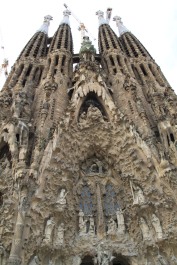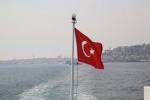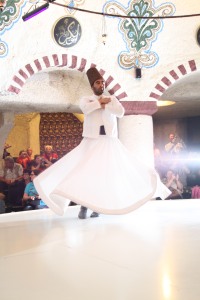Yes, you guessed it we’re going to Spain to learn about flamenco dancing. But first, I have to show you around.
Barcelona was amazing and the thing I remember most about it was the architecture, by Gaudi.
This slideshow requires JavaScript.
My favorite Gaudi building was the Casa Batlo:
 The house was designed in 1904. It was amazing!! I loved the colors, on and inside the house, because they blended in with each other very well. The architecture was very different from what you usually see in day to day life. The walls inside and outside are not completely straight. Some are almost bent in two and some have just a a small curve. The stairs were also very unusual: they were like icicles dripping down onto the floor. I’m very into architecture now and I was probably influenced by Gaudi and Barcelona.
The house was designed in 1904. It was amazing!! I loved the colors, on and inside the house, because they blended in with each other very well. The architecture was very different from what you usually see in day to day life. The walls inside and outside are not completely straight. Some are almost bent in two and some have just a a small curve. The stairs were also very unusual: they were like icicles dripping down onto the floor. I’m very into architecture now and I was probably influenced by Gaudi and Barcelona.
The Sagrada Familia was good too:
 I didn’t like it as much as Casa Batlo, but it was definitely more famous and crowded. Sagrada Familia is a church that Gaudi made the plans for. They started building it during his lifetime, but when he died, it still wasn’t finished. When I visited it, it was almost done, from my perspective at least. As you can see in the photo, they only need to finish the top of the towers. The whole building looks like dripping icicles (only the outside) and on the inside (as you saw in the photos above) it is a white wall and a white roof with flowers carved into it. There are also white columns that divide into a few thinner tangled columns, like upside down trees with their roots.
I didn’t like it as much as Casa Batlo, but it was definitely more famous and crowded. Sagrada Familia is a church that Gaudi made the plans for. They started building it during his lifetime, but when he died, it still wasn’t finished. When I visited it, it was almost done, from my perspective at least. As you can see in the photo, they only need to finish the top of the towers. The whole building looks like dripping icicles (only the outside) and on the inside (as you saw in the photos above) it is a white wall and a white roof with flowers carved into it. There are also white columns that divide into a few thinner tangled columns, like upside down trees with their roots.
If you like Gaudi, I think you’ll like this video: http://faithtap.com/2211/man-carves-sculpture-inside-caves/





